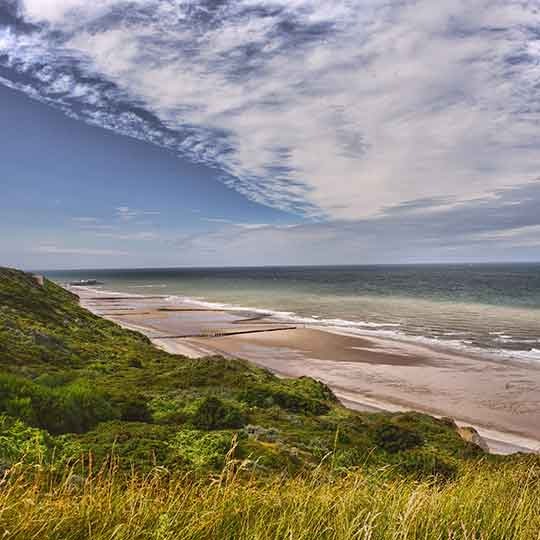From heath and woodlands to stunning beaches and wild, empty salt marsh
Walking the Norfolk Coast Path and Peddars Way
Walking the Norfolk Coast Path and Peddars Way
About the Peddars Way
Peddars Way starts at Knettishall Heath Country Park in Suffolk, a Site of Special Scientific Interest and follows the route of a Roman road for 49 miles (79 km) through the Brecks, a unique area of forest, heath and low river valleys to meet the Norfolk Coast Path at Holme-next-the-Sea.
About the Norfolk Coast Path
Check Out Our Norfolk Coast Path & Peddars Way Merchandise
How long does walking the Peddars Way and Norfolk Coast Path take, end to end?
To walk the entire trail from end to end (133 miles) will take approximately 11 days although of course, you may wish to extend this to enjoy many of the highlights that you’ll encounter along the way.
If you wish to split the route, it takes on average 4 days to walk Peddars Way and 7 days to complete the Norfolk Coast Path.
As additional sections of the England Coast Path along the Norfolk Coast are opened it is possible to continue along the coast beyond the end of the original National Trail. You can currently walk as far as Hopton-on-Sea.
How hard is walking the Peddars Way and Norfolk Coast Path?
When walking the Peddars Way & Norfolk Coast Path, which direction should I go?
Who can enjoy walking the Peddars Way and Norfolk Coast Path National Trail?
Whilst the name, Peddars Way, is said to be derived from the Latin “pedester”, which means “on foot”, most of the Peddars Way can also be accessed by cyclists and horse riders. Where there are footpath restrictions there are alternatives to the walking route via green lanes wherever possible.
However, The Norfolk Coast Path is a footpath and cannot be used by cyclists or horse riders.
Can I bring my dog while walking the Peddars Way and Norfolk Coast Path?
Your dog is welcome on the Peddars Way and Norfolk Coast Path. Some of the trail passes through farmland where stock may be grazing so please respect farmers and their animals by keeping your dog on a lead when near livestock. There are stiles that dogs may need to be lifted over. Cows with calves are very protective and can be aggressive towards dogs. Try to avoid walking close to cows with calves, if you encounter any aggression release your dog, do not try to pick it up.
You may find areas which are restricted for dogs or require them to be kept on leads at certain times of the year or in specific zones, particularly along the Norfolk Coast Path where restrictions are put in place to protect ground-nesting birds.
What is the best time of year for walking the Peddars Way and Norfolk Coast Path?
There is no obvious best time to walk the National Trail. During the summer the weather will generally be better and the vegetation is fresh, with the hedgerows in full blossom however the seaside resorts can be very busy during the school summer holidays and it’s advisable to book accommodation well in advance.
Bird watchers and wildlife enthusiasts will enjoy spring and autumn on the trail as these are the main bird migration periods however there can also be some wonderful walking experiences in the winter.




































